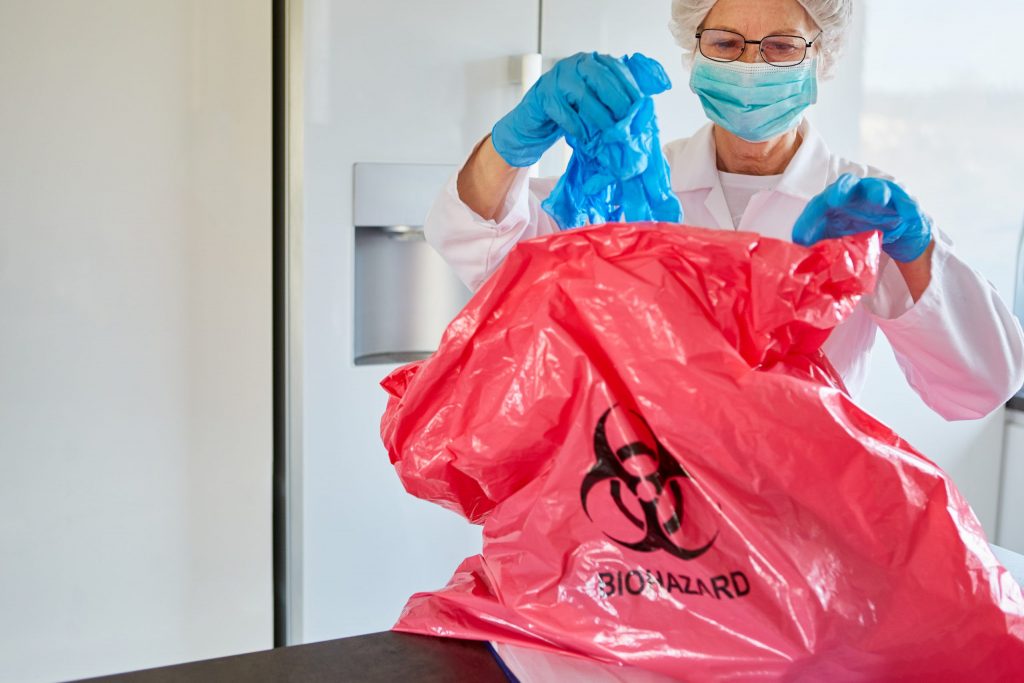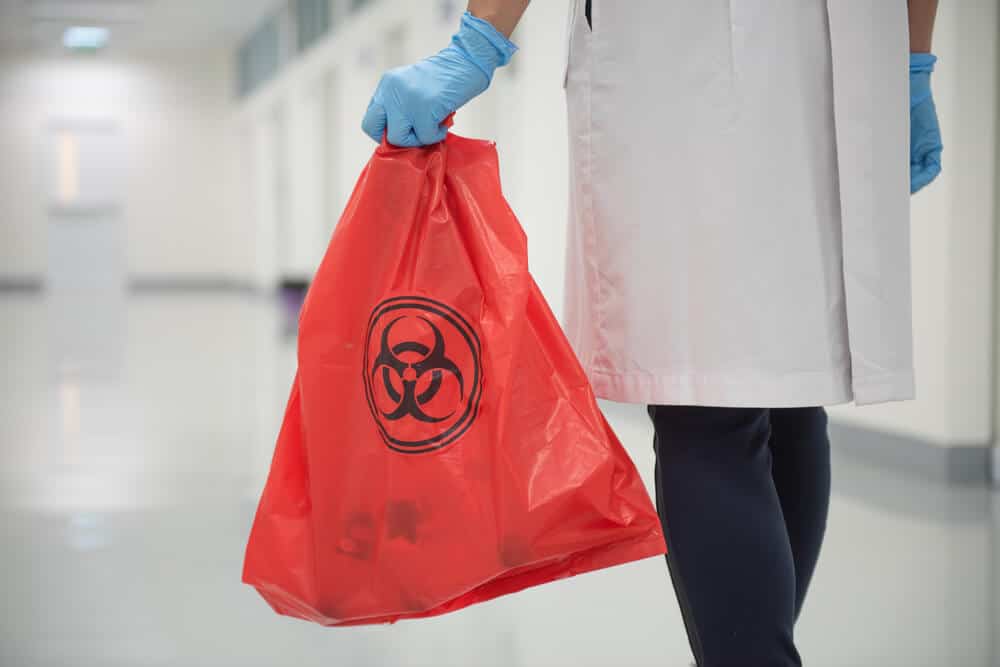Specialist Homicide and Suicide Cleanup: Compassionate and Discreet Providers
Wiki Article
Expert Biohazard Cleaning and Decontamination for Blood, Bodily Fluids, and Hazardous Materials
The possible wellness risks associated with direct exposure to biohazards highlight the critical demand for thorough handling and comprehensive cleanup. As we navigate the complex landscape of biohazard cleanup, understanding the nuances of guidelines, compliance, and the customized equipment at play comes to be important in guaranteeing a safe and complete purification process.
Wellness Dangers of Biohazard Direct Exposure
Direct exposure to biohazards postures considerable health dangers that can cause severe consequences for individuals and neighborhoods alike. Biohazards include a wide range of biological materials, consisting of blood, physical fluids, mold and mildew, bacteria, infections, and other possibly transmittable products. When individuals come right into contact with these biohazards, whether with accidents, improper handling, or environmental exposure, they encounter the risk of having serious health problems or diseases.One of the main wellness threats associated with biohazard direct exposure is the transmission of contagious conditions. Bloodborne microorganisms such as HIV, hepatitis B and C, and various bacteria can be existing in biohazardous materials, positioning a direct risk to human health. Breathing in air-borne biohazards like mold and mildew spores or entering into contact with polluted surfaces can likewise lead to respiratory concerns, allergies, and various other negative health and wellness results.
Moreover, biohazard direct exposure can have long-term health effects, with some conditions materializing years after the initial call (Blood Cleanup). Consequently, it is vital to focus on correct biohazard cleaning and purification to reduce these health risks and guarantee the safety of neighborhoods and individuals

Specialized Educating for Biohazard Clean-up
When it pertains to taking care of biohazard clean-up efficiently and securely, specialized training plays a fundamental function in making sure proper decontamination procedures are complied with. Biohazard cleanup needs specific expertise and skills to successfully alleviate threats connected with bloodborne virus, bodily fluids, and hazardous materials. Professionals educated in biohazard clean-up go through extensive instruction on just how to securely handle, get rid of, and get rid of biohazardous materials to stop contamination and direct exposure.Specialized training for biohazard cleaning covers a variety of essential topics, including appropriate personal safety equipment (PPE) usage, bloodborne microorganism understanding, decontamination methods, and dangerous waste disposal procedures. Individuals learnt biohazard clean-up are equipped with the needed know-how to analyze contamination degrees, recognize possible dangers, and carry out suitable clean-up treatments in conformity with governing requirements.
Constant training and education and learning are extremely important in the area of biohazard cleanup to stay upgraded on the most up to date decontamination modern technologies, safety and security procedures, and guidelines. By purchasing specialized training, biohazard clean-up professionals can efficiently react to emergency cleanup situations and guard both public health and wellness and the setting.
Importance of Proper Purification Techniques
Using correct decontamination techniques is essential in biohazard cleaning to properly minimize and remove unsafe materials health risks. Reliable purification not just makes certain the removal of noticeable traces of blood, bodily liquids, and other biohazards what is biohazard cleanup however likewise targets unseen pathogens that may present serious health dangers otherwise correctly removed. By adhering to strict purification methods, trained professionals can significantly decrease the danger of direct exposure to dangerous microorganisms, viruses, and germs that could cause infections or diseases.Appropriate purification techniques include the usage of specialized tools and anti-bacterials that are specifically created to reduce the effects of biohazards successfully. Complete cleaning and disinfection of infected areas are vital to protect against the spread of pathogens and make sure a safe atmosphere for owners. In addition, the proper disposal of biohazardous waste following decontamination treatments is essential in avoiding contamination of various other surfaces or individuals.

Equipment and Tools for Safe Cleaning
The correct tools and devices play a crucial duty in making certain the effective and secure cleaning of biohazardous materials. When handling blood, bodily liquids, or harmful materials, biohazard cleaning specialists depend on specialized gear to minimize direct exposure dangers and thoroughly sanitize the affected location. Personal safety tools (PPE) such as gloves, safety glasses, coveralls, and masks are crucial to safeguard against direct contact with possibly infectious materials. In addition, biohazard cleaning packages containing anti-bacterials, absorbent products, and biohazard official site bags are used to securely dispose and contain of infected products. Blood Cleanup.Advanced cleansing devices like hospital-grade disinfectants, HEPA-filtered vacuum cleaners, and misting machines are used to sterilize surface areas and eliminate biohazards effectively. Specialized tools such as sharps containers and biohazard garbage disposal bins are made use of to securely manage sharp objects and biohazardous waste materials. By using the appropriate tools and tools, biohazard cleaning experts can make sure an extensive clean-up process that focuses on security and decreases wellness threats for both employees and owners of the affected space.
Regulations and Compliance in Biohazard Cleaning
Proper adherence to regulations and compliance standards is critical in biohazard cleaning to guarantee the security of both workers and the atmosphere. Government companies such as OSHA (Occupational Safety and Health Administration) and the EPA (Environmental Protection Company) have actually developed certain guidelines for biohazard clean-up procedures to lessen wellness risks and ecological contamination. These regulations cover a series of aspects including the handling, transportation, and disposal of biohazardous materials, as well as the needed training and protective devices required for workers entailed in the cleaning procedure.Biohazard cleansing business should remain updated with these guidelines to assure that their operations meet the called for safety and security standards. Failure to adhere to these policies can lead to severe consequences, including penalties, lawsuit, and endangering the health of individuals and the setting. By complying with stringent regulations and conformity measures, biohazard cleansing companies can effectively alleviate risks and make certain a safe and detailed clean-up procedure for all celebrations entailed.
Final Thought
In conclusion, biohazard cleansing and decontamination need specialized training, appropriate techniques, and adherence to guidelines. Direct exposure to blood, bodily liquids, and hazardous materials poses considerable wellness risks, making it critical to use the appropriate equipment and devices for safe cleaning. By following rigorous protocols and standards, professionals can properly mitigate the risks connected with biohazard exposure and make sure the safety and security of both themselves and others.
As we navigate the complex landscape of biohazard cleanup, great post to read comprehending the nuances of policies, compliance, and the specialized equipment at play ends up being crucial in making sure a detailed and risk-free purification process. (Blood Cleanup)
When it comes to dealing with biohazard cleanup efficiently and securely, specialized training plays a fundamental duty in making sure appropriate decontamination procedures are adhered to.Making use of appropriate decontamination methods is essential in biohazard clean-up to successfully eliminate hazardous products and lessen health and wellness dangers. Furthermore, biohazard cleaning kits containing anti-bacterials, absorbing products, and biohazard bags are utilized to safely get rid of and consist of of polluted items.
Government firms such as OSHA (Occupational Security and Health And Wellness Administration) and the EPA (Environmental Defense Company) have established details standards for biohazard clean-up procedures to decrease health and wellness risks and ecological contamination.
Report this wiki page